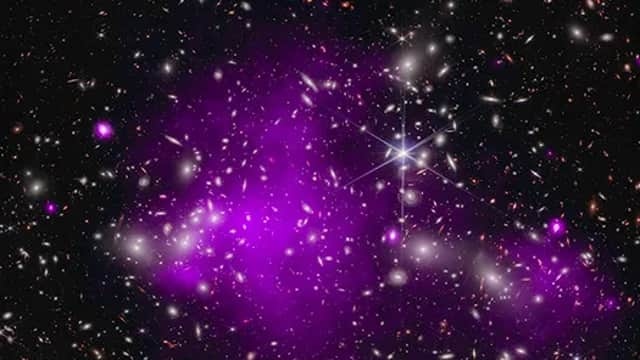UHZ1: scientists discover oldest ever black hole formed just 470m years after the Big Bang
This article contains affiliate links. We may earn a small commission on items purchased through this article, but that does not affect our editorial judgement.


The oldest black hole has been spotted in the depths of the universe, being formed just 470 million years after the Big Bang, and found via X-rays by Nasa's James Webb Space Telescope (Webb or JWST) and its Chandra X-ray Observatory.
The two telescopes teamed up to examine this ancient black hole which has a mass approximately equal to the galaxy that hosts it and can provide a clue on how supermassive black holes at the centre of the galaxy form.
Advertisement
Hide AdAdvertisement
Hide AdThere is strong evidence it was born massive, with an estimated mass of roughly 10 million and 100 million suns when calculating the X-rays' brightness and energy. Nasa says the black hole was at an early stage of growth never seen before - and its existence confirms what were just theories that supermassive black holes existed at the dawn of the universe.
The black hole, called UHZ1, is 10 times bigger than the one in our Milky Way, which is 14.6 million miles in diameter and UHZ1 is estimated to be 13.2 billion years old - the universe began 13.7 billion years ago, scientists believe.
The JWST spotted the feeble light of the early galaxy when the gravity of a massive foreground galaxy cluster, Abell 2744, amplified the light of UHZ1.
When forming, galaxies begin small and then grow through mergers, either with other galaxies or gigantic intergalactic gas clouds but scientists do not fully understand how their supermassive black holes form.
Advertisement
Hide AdAdvertisement
Hide AdOne theory is that they are formed through rapid mergers of stellar-mass black holes produced by exploding stars. The other possibility is that supermassive black holes formed directly from a collapsing gas cloud that had a mass between 10,000 and 100,000 times that of the sun.
NASA said: "This discovery is important for understanding how some supermassive black holes can reach colossal masses soon after the Big Bang.
"Do they form directly from the collapse of massive clouds of gas, creating black holes weighing between about 10,000 and 100,000 Suns? Or do they come from explosions of the first stars that create black holes weighing only between about 10 and 100 Suns?"
Explaining the differentiations between black holes, co-author of the Nature Astronomy paper, Andy Goulding, said: "There are physical limits on how quickly black holes can grow once they've formed, but ones that are born more massive have a head start. It's like planting a sapling, which takes less time to grow into a full-size tree than if you started with only a seed."
Advertisement
Hide AdAdvertisement
Hide AdPriyamvada Natarajan, who took part in the study published in Nature Astronomy, said: "It's just really early on in the universe to be such a behemoth. We think that this is the first detection of an 'outsize black hole' and the best evidence yet obtained that some black holes form from massive clouds of gas. For the first time, we are seeing a brief stage where a supermassive black hole weighs about as much as the stars in its galaxy, before it falls behind."
Comment Guidelines
National World encourages reader discussion on our stories. User feedback, insights and back-and-forth exchanges add a rich layer of context to reporting. Please review our Community Guidelines before commenting.
